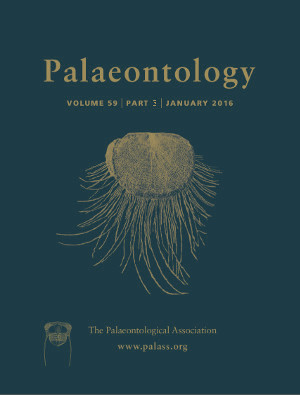Reg. Charity No. 1168330

Radial sculptural elements (e.g. ribs, lirae), formed by imbrication of two succeeding shell lamellae are found in members of both the Nautiloidea (Cymatoceras) and Ammonoidea (Phylloceratinae and Aspidoceratinae). Their formation involves periodic cessation of shell growth due to weak to moderate withdrawal of the shell secreting mantle. The radial lirae (0.5–1.5 mm in width) of Phylloceratinae and Aspidoceratinae (Aspidoceras and Pseudowaagenia) are created by the succession of sigmoid lamellae of the organic periostracum or of the outer prismatic layer, respectively. Each lira has a characteristic adorally‐projecting, scythe‐like appendage, arising from its crest. The prismatic lirae of Aspidoceras and Pseudowaagenia are analogous to the larger scaled pseudoribs of Cymatoceras. Garland‐like lamellae of the outer prismatic layer form the radial lirae of Mirosphinctes and Epaspidoceras (Aspidoceratinae), but these lack a conspicuous, projecting scythe‐like appendage. Additional prismatic cement is formed within adoral, oval hollow spaces of scythe‐appendage‐bearing lirae, either through diagenetic crystal growth, remote biomineralization or as a component of the dorsal shell. In Aspidoceratinae these prismatic infillings are replaced by a continuous herringbone layer, accompanied by a reduction of the lirae.